By the Recorder editorial staff
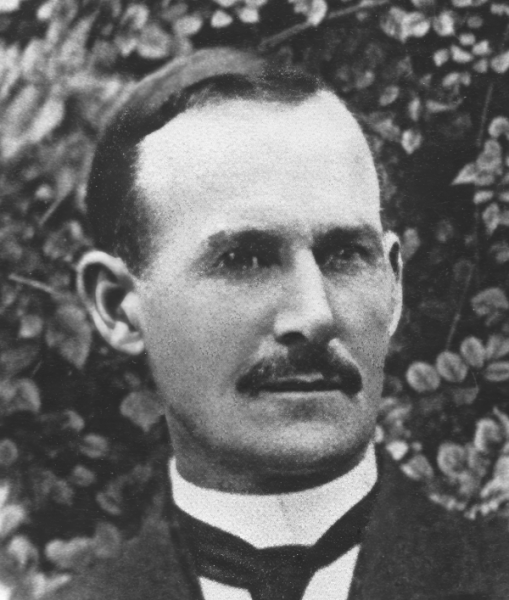
John Burden became an Adventist at age 13. He attended Healdsburg College, where he met Eleanor Baxter. They married in 1888 while working at the Rural Health Retreat (later St. Helena Sanitarium; now Adventist Health St. Helena). Burden became manager of the institution in 1891.
In 1901 Eleanor and John Burden went to Australia, following in the footsteps of Ellen White, who had returned to the U.S. the previous year. There they helped Merritt Kellogg start the Sydney Sanitarium. They returned to the U.S. in 1904 and followed Ellen White’s advice not to join John Harvey Kellogg in Battle Creek. Instead they went to California, where John was instrumental in establishing the Glendale Sanitarium. He became the manager, and his wife was the accountant.
While Ellen White had helped purchase another sanitarium (Paradise Valley), she still wanted to do more in terms of health evangelism. After the loss of Battle Creek Sanitarium in the East, Ellen White was doing all she could to rebuild the church’s health ministry in the West. So she instructed Burden to search the Redlands-Riverside area for a property she had seen in vision.
In March 1904 Burden found a resort hotel in Loma Linda, but at $110,000 the price was exorbitant. However, due to the failure of the proprietors’ plans, the asking price dropped over time to $40,000, and Ellen White urged Burden to go ahead with the purchase. The property consisted of the furnished hotel building, an amusement building, five cottages, a farmhouse, farm implements, horses, carriages, and cows on a 76-acre tract.
Ellen White was very interested in acquiring the property and asked Burden to keep her updated on progress. He soon sent her a message saying that they had to proceed immediately as the owners were anxious to sell and others were interested. She wrote back, “Go ahead.... I am well satisfied the place is one we ought to have. It is cheap at $40,000. We will not leave you, but will stand back of you, and help you to raise the means.”1
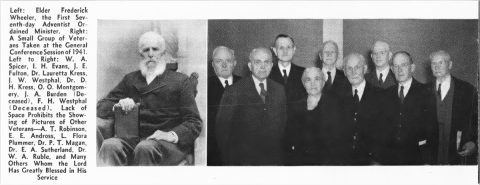
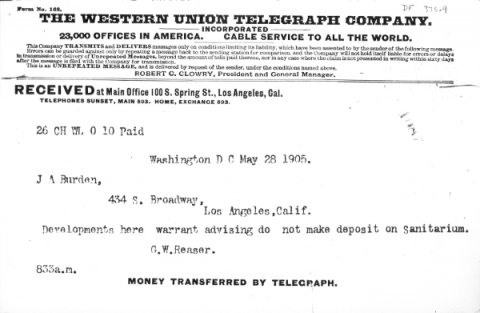
Church administrators were not convinced however, so they sent Burden a telegram stating that he should not proceed. Ellen White also sent a telegram, telling him to “secure the property by all means…without spending time to ask the advice of the brethren.” Burden went ahead.
Even so, it was not an easy process. The first installment was made, but on the day the second installment was due, no money was available. It was only through an amazing chain of events that the money was found. Burden writes:
At last the day arrived [for the second payment], and the forenoon found the members of the Conference Committee in session in Los Angeles in deep perplexity. It was natural that some who had from the first felt it unwise to accept the great responsibility should feel that these circumstances justified their misgivings. In the face of the humiliating necessity, as it seemed, of losing the property, it was easy and natural to blame and censure those who had pressed the matter through against what appeared to be sound reason and judgment.... Soon after this the postman was heard coming up the stairs. He opened the door and delivered the mail. Among the letters was one bearing the postmark ‘Atlantic City, New Jersey.’ The letter was opened, and it was found to contain a draft for $5,000, just the amount needed for the payment.2
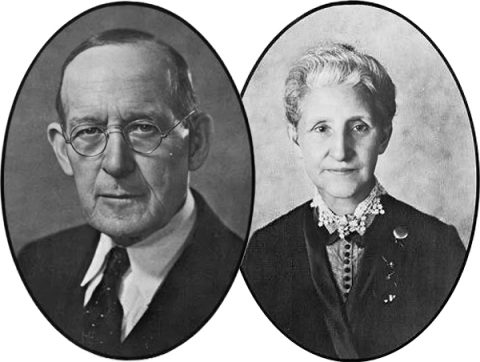
Eventually the whole purchase was made, and the property secured for the church. Burden was appointed manager of the new facility. The staff were dedicated to the cause: “Shortly after the sanitarium opened, the income from the patients failed to meet the expenses, and these workers volunteered their services for room and board until in a short time the patronage increased. By Christmastime there were thirty-five patients. At the end of the first year the balance sheet showed a gain of $1,100.”3
Loma Linda was to be far more than just another sanitarium. It was to be a place of training, and not just in the medical field. Ellen White saw this as a place where doctors and pastors could be trained together for their mutual benefit. However, this did not develop as she wanted.
Nonetheless, in due course the College of Medical Evangelists was established, which eventually led to the Loma Linda University School of Medicine.
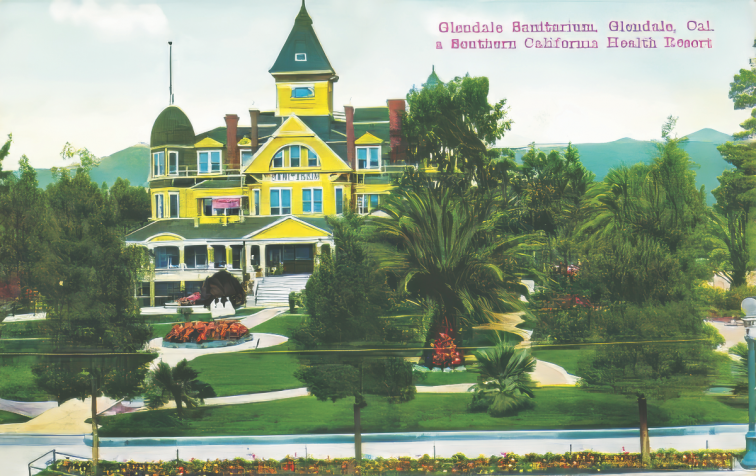
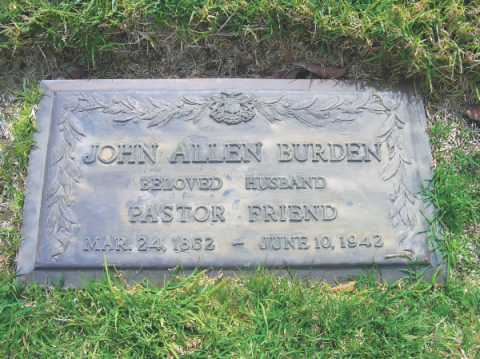
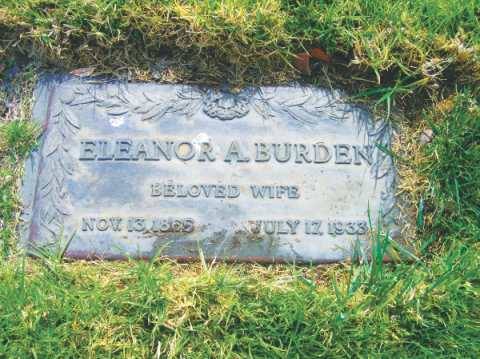
Ellen White wrote to Burden frequently, encouraging him in his work. She also stood up for him, putting others in their place when necessary, including one conference president, arguing that Burden should be allowed to fulfill his calling:
“The Lord has blessed Elder Burden, and He will continue to bless him, as he continues to move in the fear of God, and plans wisely and economically with his associates for the fitting up and management of the institution. If any of his brethren act arbitrarily in an effort to restrain him in this, they would be hindering the very work that the Lord has signified should be done. He is not to be forced to turn aside from his convictions as to the way in which the work under his charge shall be carried on.”4
Burden continued at Loma Linda until 1915, when he and his wife moved to Paradise Valley Sanitarium. He retired after his wife’s death in 1933, but in 1939 he returned to Loma Linda to serve as chaplain until his death in 1942.
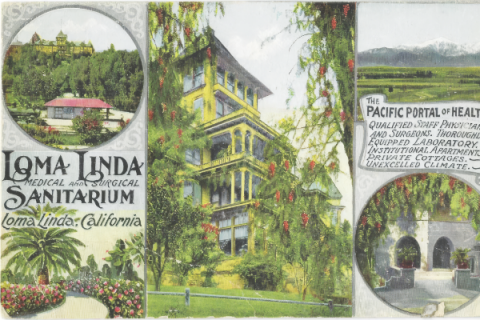
_____________________________
1 Harold Oliver McCumber, Pioneering the Message in the Golden West (Mountain View, CA: Pacific Press Pub. Assn., 1946), p. 200.
2 McCumber, Pioneering the Message, pp. 204-205.
3 McCumber, Pioneering the Message, p. 112.
4 Ellen G. White, Loma Linda Messages (Payson, AZ: Leaves-of-Autumn Books, 1981), p. 182.
Pioneros adventistae en el oeste: Inicios: John Burden
Por el personal editorial del Recorder
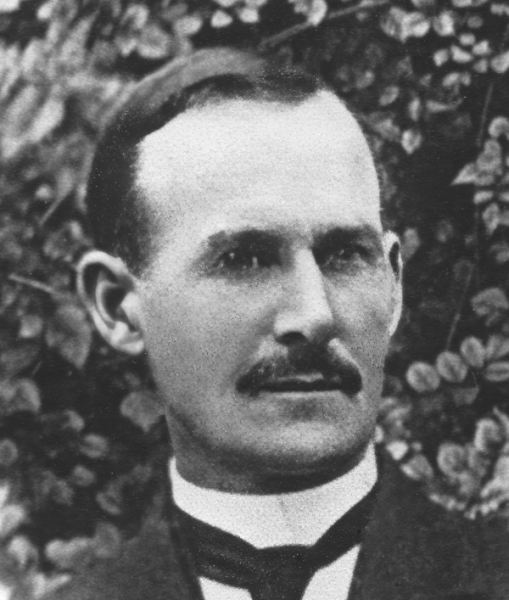
John Burden se convirtió en adventista a los 13 años. Asistió al Healdsburg College, donde conoció a Eleanor Baxter. Se casaron en 1888 mientras trabajaban en Rural Health Retreat (más tarde St. Helena Sanitarium; ahora Adventist Health St. Helena). Burden se convirtió en gerente de esa institución en 1891.
En 1901 Eleanor y John Burden fueron a Australia, siguiendo los pasos de Ellen White, quien había regresado a los Estados Unidos el año anterior. Allí ayudaron a Merritt Kellogg a fundar Sydney Sanitarium. Regresaron a los Estados Unidos en 1904 y siguieron el consejo de Ellen White de no unirse a John Harvey Kellogg en Battle Creek. En su lugar, fueron a California, donde John jugó un papel decisivo en el establecimiento de Glendale Sanitarium. Se convirtió en el gerente y su esposa fue la contadora.
Aunque Ellen White había ayudado a comprar otro sanatorio (Paradise Valley), todavía quería hacer más en términos de evangelismo de salud. Después de la pérdida de Battle Creek Sanitarium en el Este, Ellen White estaba haciendo todo lo posible para reconstruir el ministerio de salud de la iglesia en el oeste. Así que le ordenó a Burden que buscara en el área de Redlands-Riverside una propiedad que había visto en visión.
En marzo de 1904 Burden encontró un hotel en Loma Linda, pero a 110.000 dólares el precio era exorbitante. Sin embargo, debido al fracaso de los planes de los propietarios, el precio de venta bajó con el tiempo a 40.000 dólares, y Ellen White instó a Burden a seguir adelante con la compra. La propiedad consistía en el edificio amueblado del hotel, un edificio de atracciones, cinco cabañas, una granja, aperos de labranza, caballos, carruajes y vacas en un terreno de 76 acres.
Ellen White estaba muy interesada en adquirir la propiedad y le pidió a Burden que la mantuviera informada sobre el progreso. Burden le envió un mensaje diciéndole que tenían que proceder de inmediato, ya que los propietarios estaban ansiosos por vender y otros estaban interesados. Ella le respondió: «Adelante... Estoy muy satisfecha de que el lugar es uno que deberíamos tener. Es barato a 40.000 dólares. No te abandonaremos, sino que te apoyaremos y te ayudaremos a reunir los medios».1Sin embargo, los administradores de la iglesia no estaban convencidos, por lo que enviaron a Burden un telegrama diciendo que no debía proceder. Ellen White también le envió un telegrama, diciéndole que «asegurara la propiedad por todos los medios... sin perder tiempo en pedir consejo a los hermanos». Burden siguió adelante.
Aun así, no fue un proceso fácil. Se hizo la primera cuota, pero el día en que vencía la segunda cuota, no había dinero disponible. Fue solo a través de una asombrosa cadena de eventos que se encontró el dinero. Burden escribe:
Por fin llegó el día [para el segundo pago], y la mañana encontró a los miembros del Comité de la Conferencia reunidos en Los Angeles en profunda perplejidad. Era natural que algunos de los que desde el principio habían creído imprudente aceptar la gran responsabilidad, sintieran que esas circunstancias justificaban sus recelos. Ante la humillante necesidad, al parecer, de perder la propiedad, era fácil y natural culpar y censurar a los que habían insistido en el asunto contra lo que parecía ser una razón y un juicio sanos. Poco después se oyó al cartero subir las escaleras. Abrió la puerta y entregó el correo. Entre las cartas había una con el matasellos «Atlantic City, New Jersey». La carta fue abierta y se descubrió que contenía una letra de cambio por 5.000 dólares, justo la cantidad necesaria para el pago.2
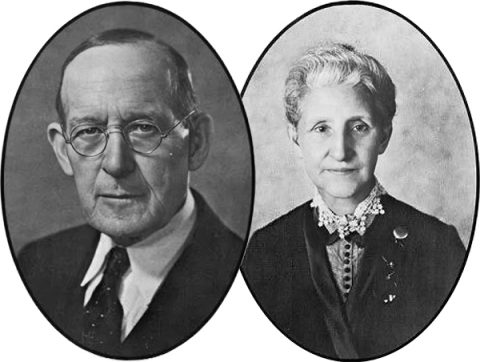
Con el tiempo, se hizo toda la compra y se aseguró la propiedad para la iglesia. Burden fue nombrado gerente de la nueva instalación. El personal se dedicó a la causa: «Poco después de abrir el sanatorio, los ingresos de los pacientes no alcanzaron para cubrir los gastos, y estos trabajadores ofrecieron voluntariamente sus servicios para alojamiento y comida hasta que en poco tiempo el patrocinio aumentó. En Navidad había treinta y cinco pacientes. Al final del primer año, el balance general mostró una ganancia de $1,100».3
Loma Linda iba a ser mucho más que un sanatorio más. Iba a ser un lugar de formación, y no solo en el campo de la medicina. Ellen White lo vio como un lugar donde los médicos y los pastores podían ser entrenados para su beneficio mutuo. Sin embargo, eso no se desarrolló como ella quería.
No obstante, a su debido tiempo se estableció el College of Medical Evangelists, que finalmente condujo a la Escuela de Medicina de Loma Linda University.
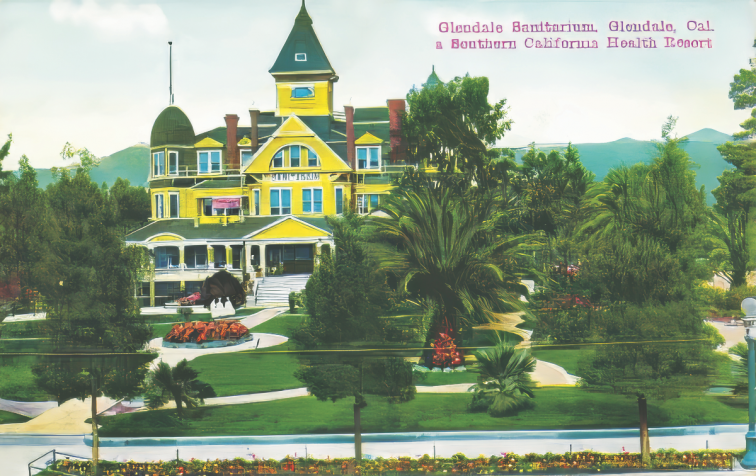
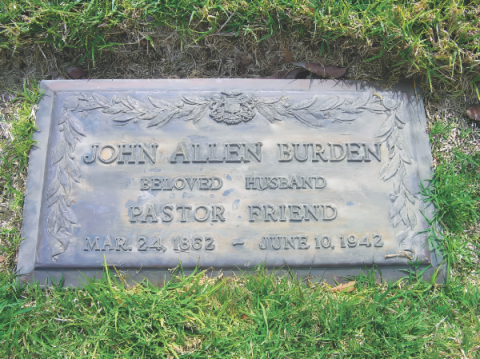
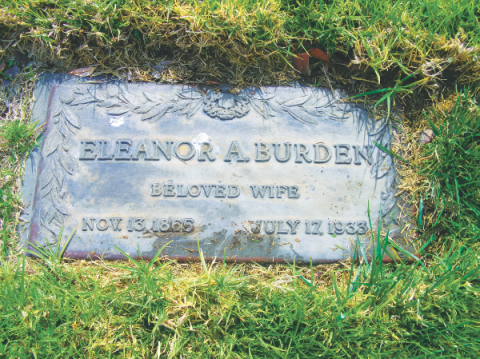
Ellen White escribía a Burden con frecuencia, animándolo en su obra. También lo defendió, poniendo a otros en su lugar cuando fue necesario, incluido un presidente de la conferencia, argumentando que se debería permitir que Burden cumpliera con su llamado:
«El Señor ha bendecido al pastor Burden, y continuará bendiciéndolo, a medida que continúe moviéndose en el temor de Dios, y planifique sabia y económicamente con sus asociados el acondicionamiento y la administración de la institución. Si alguno de sus hermanos actuaran arbitrariamente en un esfuerzo por restringirlo, estarían obstaculizando la misma obra que el Señor ha indicado que se haga. No se le debe obligar a apartarse de sus convicciones en cuanto a la manera en que se llevará a cabo la obra que está a su cargo».4
Burden continuó en Loma Linda hasta 1915, cuando él y su esposa se mudaron al Paradise Valley Sanitarium. Se retiró después de la muerte de su esposa en 1933, pero en 1939 regresó a Loma Linda para servir como capellán hasta su muerte en 1942.
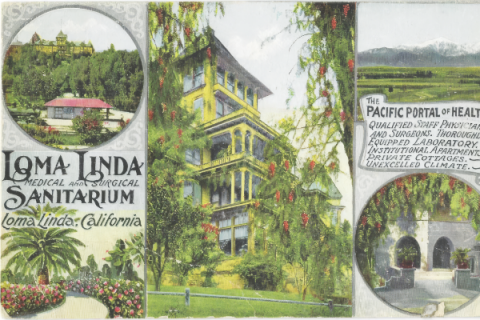
_____________________________
1 Harold Oliver McCumber, Pioneering the Message in the Golden West (Mountain View, CA: Pacific Press Pub. Assn., 1946), p. 200.
2 McCumber, Pioneering the Message, pp. 204-205.
3 McCumber, Pioneering the Message, p. 112.
4 Ellen G. White, Loma Linda Messages (Payson, AZ: Leaves-of-Autumn Books, 1981), p. 182.









